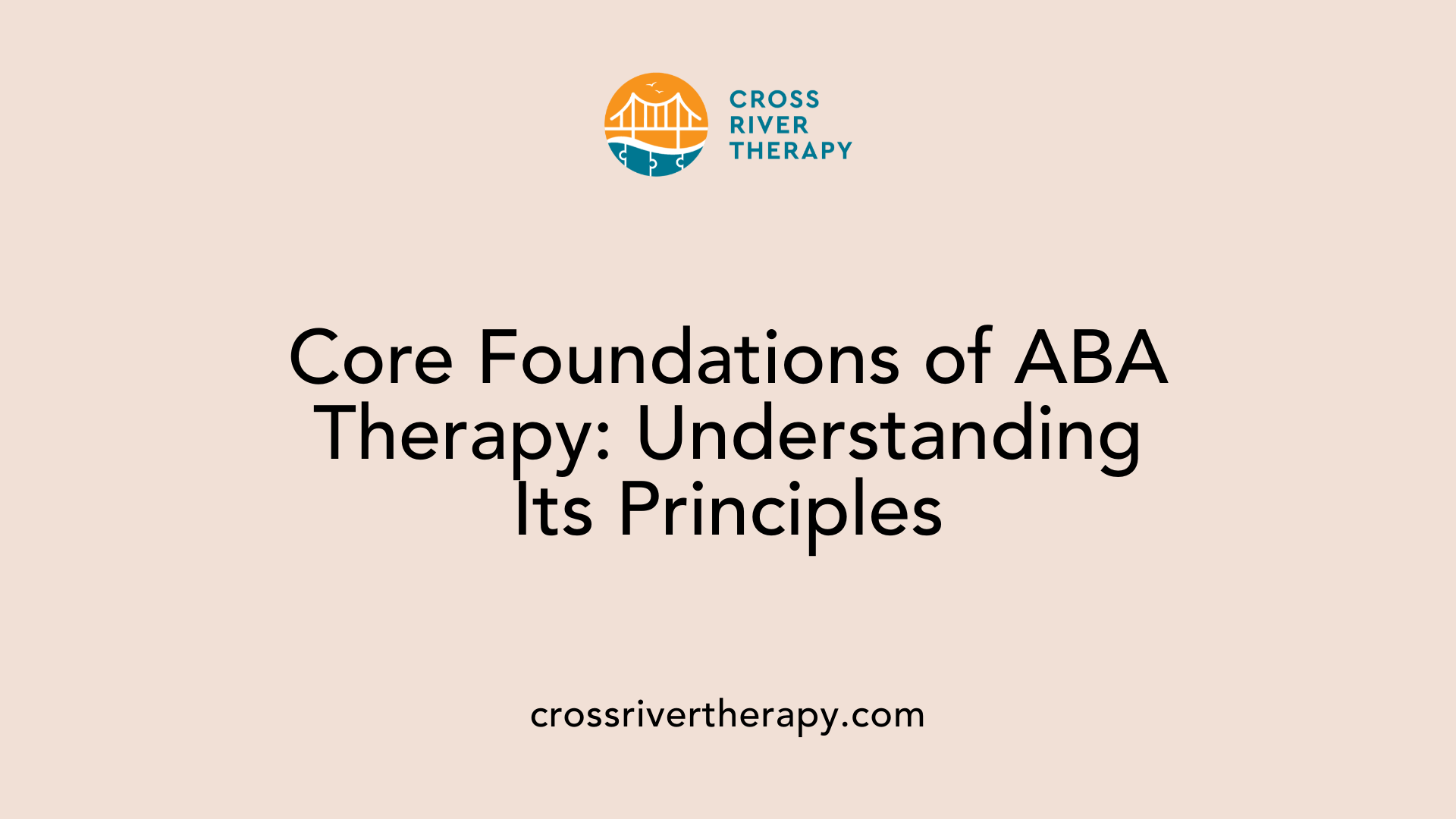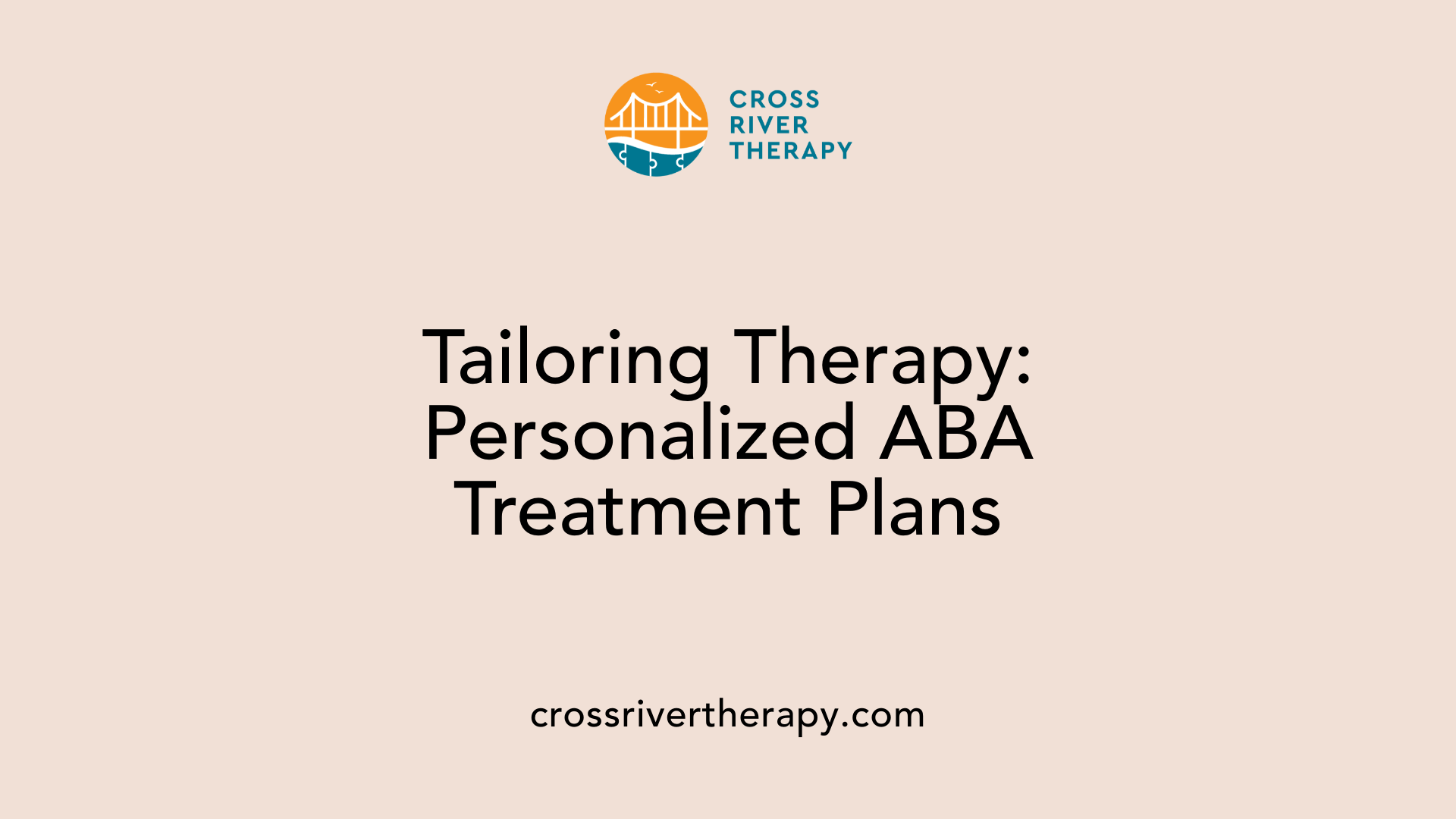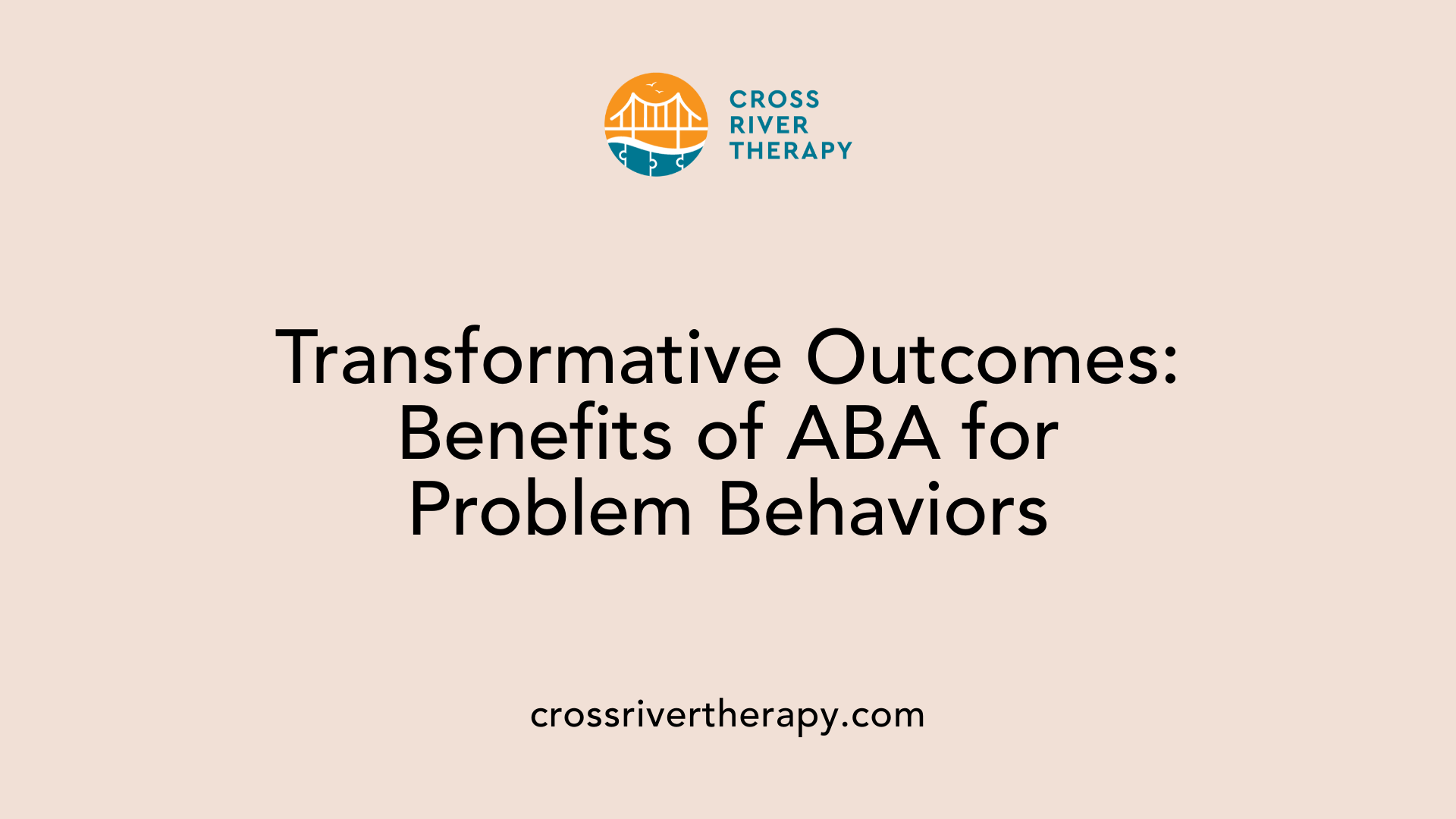The Role of ABA Therapy in Improving Problem Behavior
Exploring ABA Therapy's Impact on Challenging Behaviors
Understanding ABA Therapy
Applied Behavior Analysis (ABA) therapy has become a cornerstone in the treatment of Autism Spectrum Disorder (ASD), focusing on modifying problematic behaviors and enhancing critical social skills. This therapeutic approach applies principles of behavior analysis to address behaviors that impact individuals' ability to interact and learn. Known for its evidence-based methods, ABA aims to reinforce positive behaviors and diminish undesirable ones, promoting a more fulfilling life for those on the autism spectrum.
Foundational Principles of ABA Therapy

What are the main principles of ABA therapy?
ABA therapy, or Applied Behavior Analysis, is founded on core principles that enhance specific skills, particularly for children on the autism spectrum. It encompasses seven dimensions: Applied, Behavioral, Analytic, Technological, Conceptually Systematic, Effective, and Generality. These principles enable therapists to create structured and evidence-based interventions.
Central to ABA is the ABC model, which focuses on three elements:
- Antecedents (A): What triggers a behavior.
- Behavior (B): The specific action or response.
- Consequences (C): The outcomes that follow the behavior.
Using positive reinforcement techniques, ABA encourages desirable actions while discouraging less desirable ones. The application of these principles across different environments supports meaningful and sustainable behavior change.
How ABA impacts behaviors in ASD
Applied Behavior Analysis has shown to be particularly effective in modifying behaviors in children with Autism Spectrum Disorder (ASD). By focusing on learning and reinforcing specific skills, ABA promotes positive changes in communication, social interactions, and daily living skills.
Research indicates the following outcomes of ABA therapy for children with ASD:
- Communication Skills: Breaking down language into manageable components enhances expressive language abilities.
- Social Skills: Children learn essential social cues and engagement techniques, which facilitate better peer relationships.
- Problem Behaviors: ABA addresses and reduces challenging behaviors, leading to improved family dynamics and quality of life.
The versatility and adaptability of ABA strategies allow for tailored interventions that meet individual needs, ultimately enabling children with ASD to gain more independence.
Effective Techniques in ABA Therapy

What are some examples of Applied Behavior Analysis techniques?
Applied Behavior Analysis (ABA) techniques encompass a diverse range of methods aimed at fostering positive behaviors and facilitating learning. Here are some commonly utilized techniques:
- Discrete Trial Training (DTT): This method breaks tasks into small, manageable steps and reinforces correct responses to encourage learning.
- Positive Reinforcement: A cornerstone of ABA, this involves presenting a desirable stimulus following a desired behavior to increase the likelihood of that behavior reoccurring.
- Functional Behavior Assessment (FBA): This assessment technique identifies the underlying reasons for challenging behaviors, enabling tailored interventions.
- Antecedent-Based Interventions (ABI): Modifying the environment or circumstances that trigger problematic behavior can prevent these behaviors from occurring altogether.
- Modeling: Therapists demonstrate targeted behaviors for children to observe and imitate, facilitating learning through imitation.
- Picture Exchange Communication System (PECS): This technique employs images to assist non-verbal children in communicating their needs effectively.
Examples and applications
These ABA techniques can be applied across various scenarios, notably in improving communication skills, social interactions, and reducing challenging behaviors. Each technique is chosen based on the individual child's needs and learning styles, ensuring a tailored approach. For instance, DTT is often effective in teaching foundational skills to young children, while ABI can be useful in classrooms to create a supportive learning environment.
By employing these varied strategies, ABA aims to equip children with essential skills that enhance their independence and quality of life.
Customizing ABA for Individual Needs

Personalized Treatment Plans
In Applied Behavior Analysis (ABA) therapy, each child receives a tailored treatment plan designed to meet their unique needs. These plans are developed based on comprehensive assessments that evaluate a child’s strengths, weaknesses, and individual circumstances. Specific goals are set, focusing on enhancing positive behaviors, communication skills, and overall social interactions.
This personalized approach ensures that interventions are relevant and effective, fostering better engagement and results. With structured methodologies like Discrete Trial Training (DTT) and Pivotal Response Treatment (PRT), therapists adapt their strategies to align with each child's learning style and behavioral context.
Board Certified Behavior Analyst Role
Central to the success of ABA therapy is the Board Certified Behavior Analyst (BCBA), a trained professional responsible for evaluating a child’s needs and crafting individualized treatment programs. The BCBA conducts initial assessments, implements intervention strategies, and regularly monitors progress through data collection.
They play a vital role in collaborating with families, ensuring that parents are equipped with tools to reinforce learned behaviors at home. This partnership is essential for generalizing skills across different environments, amplifying the effectiveness of the therapy.
Through this structured yet flexible methodology, ABA therapy effectively supports children with autism in achieving significant developmental milestones.
Benefits of ABA in Managing Problem Behaviors

Impact of ABA on Problem Behaviors
ABA therapy is designed specifically to address behavior problems in children with autism. The methodology focuses on increasing helpful behaviors and decreasing harmful ones that impede learning. By utilizing positive reinforcement techniques, ABA encourages children to repeat desirable behaviors.
The therapy especially helps in reducing problematic behaviors like aggression and self-injury. This is achieved through careful assessment and the creation of individualized treatment plans. These plans are tailored to each child's unique needs and address specific behavioral challenges. As a result, children often show significant improvements in social skills and communication, which are critical for their development.
Benefits for Children with Autism
Research supports that long-term engagement in ABA therapy can lead to notable advancements in a child's overall quality of life. For example, children who consistently participate in ABA demonstrate improvements in attention and adaptability.
While some criticisms of ABA exist regarding its focus on behavior modification, contemporary practices emphasize creating fun, engaging environments. This nurturing framework not only addresses behavioral issues but also helps children develop their inherent strengths, promoting healthy interactions and enhancing their capacity for independence.
By providing structured strategies and supporting caregivers, ABA therapy aims for sustained behavioral improvements that transcend therapy sessions, leading to an enriched family life.
Addressing Criticisms of ABA Therapy
Are there criticisms or concerns about ABA therapy?
While Applied Behavior Analysis (ABA) therapy is widely recognized as an effective treatment for children with autism, it also faces several critiques. Critics argue that historic ABA practices often concentrated excessively on eliminating challenging behaviors without equally emphasizing the development of new, positive skills. Some autism advocates express concerns that this focus runs the risk of enforcing conformity to neurotypical standards at the expense of individual identity.
Concerns have also been raised regarding the emotional and psychological effects of ABA. Although modern ABA techniques have moved away from punitive measures, there are instances where harsh practices have led to distress, or even symptoms akin to PTSD, in some individuals. Another point of contention is the potential discouragement of natural self-soothing behaviors, like stimming, which many autistic individuals use to manage anxiety. Critics stress that therapeutic approaches should be designed around the distinct needs and experiences of autistic individuals, prioritizing their comfort and personal growth rather than mere compliance with conventional social norms.
What distinguishes modern ABA practices from traditional methods?
Modern ABA practices have shifted significantly from earlier methods that incorporated punishment, focusing instead on positive reinforcement to promote desired behaviors. While earlier ABA might have prioritized control over the individual, contemporary approaches emphasize building on the strengths of autistic children, fostering autonomy, and making learning enjoyable and engaging. This evolution reflects a growing understanding of the unique challenges faced by individuals with autism, aiming to respect their needs while assisting them in developing vital life skills.
In summary, while ABA therapy can provide substantial benefits, it is crucial for practitioners to continually adapt their methodologies to ensure respect and positive outcomes for all autistic individuals.
Broader Applications of ABA Therapy
Can ABA therapy be used for conditions other than autism?
Yes, ABA therapy can be utilized for a variety of conditions beyond autism spectrum disorders (ASD). While its primary reputation is tied to autism, research supports its effectiveness in addressing several behavioral and developmental challenges.
Here’s a quick overview of its broader applications:
| Condition | ABA Application | Effectiveness |
|---|---|---|
| ADHD | Enhancing self-regulation and impulse control | Proven impact on behavior |
| Intellectual Disabilities | Teaching daily living skills and improving social communication | Significant behavioral gains |
| Anxiety Disorders | Developing coping strategies and emotional regulation | Helps manage triggers |
| Oppositional Defiant Disorder (ODD) | Supporting emotional regulation and positive responses | Fosters cooperation |
| Substance Abuse | Behavioral interventions to reduce addiction | Adaptable techniques |
ABA techniques, characterized by reinforcement and skill-building strategies, are adaptable for individuals of all ages and settings, encompassing contexts like educational environments and behavioral interventions in various developmental challenges.
Furthermore, some practitioners apply ABA principles without a formal autism diagnosis, emphasizing the method's versatility. This adaptability allows ABA to address a wide range of behaviors effectively, highlighting its broad applicability in promoting positive behavior and skills across different contexts.
Overall, ABA remains a comprehensive tool in the behavioral health landscape, proving effective for enhancing life skills and reducing problem behaviors across various conditions.
Training for ABA Practitioners
What training is required to become an ABA therapist?
The pathway to becoming an ABA therapist starts with obtaining a bachelor’s degree in a relevant field such as psychology, sociology, or education. This foundational education is crucial for understanding behavior and development.
Following the bachelor’s degree, aspiring therapists must complete a master’s degree specifically in Applied Behavior Analysis (ABA). The curriculum typically includes coursework related to behaviors, interventions, ethics, and assessments tailored to meet the needs of individuals with developmental challenges, especially those with autism spectrum disorder.
Gaining practical experience is the next step, where candidates complete supervised training, typically amounting to 1,500 to 2,000 hours working under the mentorship of experienced professionals. This hands-on experience is critical for applying theoretical knowledge in real-world settings and developing practical skills in behavior analysis.
Once these educational and experiential requirements have been met, candidates can pursue certification from the Behavior Analyst Certification Board (BACB) to become a Board Certified Behavior Analyst (BCBA). Achieving this certification involves passing a comprehensive exam that assesses knowledge and competency in behavior analysis.
Various training programs and online courses are available to assist candidates in meeting these qualifications, often designed by seasoned BCBAs to fit the needs of students. Overall, entering this rewarding field can take at least six years of education and training, leading to a fulfilling career focused on improving the lives of individuals facing behavioral challenges.
Understanding Behaviors Through ABA
What are the four functions of problem behavior in ABA?
In the realm of Applied Behavior Analysis (ABA), understanding the underlying reasons for problem behaviors is crucial for effective intervention. The four primary functions of problem behavior include:
Escape: This function pertains to behaviors aimed at avoiding or getting out of challenging situations. For example, a child might refuse to complete a difficult task to escape from the discomfort associated with it.
Attention-Seeking: Some behaviors are performed with the intent of gaining social interaction or attention from others. A child may act silly or misbehave to elicit laughter or responses from peers or adults.
Access to Tangibles: Behaviors aimed at obtaining certain items or activities fall under this function. A classic example includes a child throwing a tantrum to secure a desired toy or snack.
Sensory Stimulation: This function involves behaviors that provide self-reinforcement through pleasurable sensory experiences. Actions like rocking back and forth or hand-flapping often serve to elicit soothing sensations for the individual.
By identifying these functions, ABA practitioners can develop tailored intervention strategies that address the root causes of behaviors, promoting more positive outcomes for the child.
Modern Adaptations in ABA Therapy
Evolution of ABA Techniques
Applied Behavior Analysis (ABA) has undergone significant transformations to adapt to the evolving needs of children with Autism Spectrum Disorder (ASD) and associated developmental disabilities. Initially, some practices leaned heavily on punitive measures; however, modern ABA focuses predominantly on positive reinforcement. This approach aims to promote desired behaviors while reducing problematic actions effectively, leading to a more engaging and enjoyable therapeutic environment for children.
Common techniques now include structured methods such as Discrete Trial Training (DTT) and Pivotal Response Treatment (PRT), which break down complex tasks into manageable steps and focus on pivotal behaviors that catalyze overall change. Moreover, Natural Language Acquisition approaches emphasize teaching communication skills in a context familiar to the child, enhancing interaction prospects in real-world settings.
Focus on Positive Reinforcement
Modern ABA practices primarily utilize positive reinforcement to encourage adaptive behaviors rather than discourage negative ones through punishment. This shift has led to more child-friendly interventions that celebrate achievements, whether they are big or small.
Techniques include:
- Verbal praise and social rewards
- Token economies to reinforce behaviors
- Family involvement through parent-implemented interventions
This focus not only empowers children but also fosters a positive learning atmosphere, allowing for greater independence and improved communication skills.
Parental Involvement and Training
Role of Parents in ABA
Parents play a critical role in the success of Applied Behavior Analysis (ABA) therapy. They are essential partners in their child's treatment journey, reinforcing skills and strategies at home. Engaging in the therapy process allows parents to understand behavioral goals and how to implement techniques consistently.
Moreover, ABA therapists often equip parents with tools and strategies tailored to support their child's unique needs and help manage challenges effectively. This collaboration ensures that interventions are generalized across various environments, maximizing the impact of therapy.
Enhancing Therapy Outcomes
Training parents not only empowers them but also enhances outcomes for children undergoing ABA therapy. Parental involvement promotes consistency and reinforces the learned skills, which are critical for maintaining progress outside of therapy sessions. By integrating techniques such as positive reinforcement and behavioral interventions into daily activities, parents can significantly contribute to their child's independence and overall development.
In essence, actively involving parents fosters a supportive home environment that reinforces the skills learned in therapy, ultimately leading to more favorable results in the child's communication, social skills, and adaptive behaviors.
Impact on Family Dynamics
Stress Reduction for Families
ABA therapy provides significant support not only for children with autism but also for their families. Parents often experience stress and anxiety regarding their child's behavior and developmental progress. By implementing ABA strategies, families gain tools and techniques to manage challenging behaviors effectively. This leads to reduced anxiety as parents develop confidence in addressing their child's needs.
Quality of Life Improvements
The positive effects of ABA therapy extend to the entire family unit. As children learn and develop essential skills—like communication and social interactions—families experience improved relationships and a more harmonious home environment. Parents notice that their children are better able to engage in daily activities, which enhances overall quality of life. In many cases, families report a greater sense of satisfaction and fulfillment as they witness their child's growth and independence, contributing to a happier household atmosphere.
| Topic | Benefit | Impact |
|---|---|---|
| Stress Reduction | Tools for managing behavior and routines | Reduced parental anxiety |
| Quality of Life | Improvements in child behavior and communication | Enhanced family dynamics |
Evidential Support for ABA Effectiveness

Research and Studies Supporting ABA
Numerous studies have demonstrated the effectiveness of Applied Behavior Analysis (ABA) in improving the quality of life for children with Autism Spectrum Disorder (ASD). More than 81% of studies reviewed reported significant improvements in cognitive, language, and adaptive behaviors. For instance, among children aged 0-5 years, 66% showed enhancements in cognitive outcomes, and 68% reported gains in language skills. In the older age group of 6-12 years, an impressive 86% of studies indicated reductions in problem behaviors. Such data strongly supports ABA's role as an effective intervention.
Endorsements from Health Authorities
Leading health authorities, including the U.S. Department of Health & Human Services, recognize ABA as a gold-standard treatment for ASD. They endorse its evidence-based applications, recommending it as a primary intervention to improve communication and social skills while diminishing challenging behaviors. This endorsement highlights not only the scientific basis of ABA but also its practical implication in real-world scenarios, confirming its necessity in therapeutic settings for children with autism.
Crafting Behavior Intervention Plans (BIPs)
Components and Implementation of BIPs
Behavior Intervention Plans (BIPs) are customized strategies developed to address challenging behaviors in individuals undergoing ABA therapy. These plans are crafted after thorough Functional Behavior Assessments (FBAs), which determine the underlying causes of specific behaviors.
Key components of a BIP include:
- Assessment Results: Data from FBAs outlining target behaviors and triggers.
- Goals and Objectives: Clearly defined outcomes that the plan aims to achieve.
- Intervention Strategies: Specific techniques and methodologies to help alter negative behaviors.
- Data Collection Methods: Regularly tracking progress to ensure the BIP’s effectiveness.
- Collaboration Plans: Involvement of teachers, therapists, and caregivers for consistent reinforcement.
Role in Managing Behaviors
BIPs play a crucial role in effectively managing problematic behaviors. By providing a structured approach, they help individuals learn appropriate responses and reduce challenging behaviors, ultimately improving overall quality of life. This collaborative format also enhances the ability to generalize positive behaviors across various settings, ensuring a supportive environment for all parties involved.
Personal Testimonies and Experiences
Success stories of ABA therapy
Many families have shared inspiring stories about the positive impact of Applied Behavior Analysis (ABA) therapy on their children with Autism Spectrum Disorder (ASD). They often highlight significant improvements in communication skills, social interactions, and even daily living skills. Parents frequently express how their children have gained confidence and learned essential skills that enhance their independence, making family life more enjoyable.
Children and family experiences
The experiences of children and their families involved in ABA therapy can vary widely. While numerous families report success, it's crucial to acknowledge that some have faced challenges. Particularly concerning are the negative experiences associated with ABA therapy.
Families recount stories where children felt emotional distress or exhibited changes in behavior that led to low self-esteem. Instances of excessive repetitive tasks have raised concerns, with some practitioners inadvertently causing harm through rigid or outdated methods. Moreover, lack of parental involvement or inconsistent support has sometimes resulted in less effective therapy, diminishing the potential benefits.
Despite these challenges, effective communication and support systems can mitigate negative outcomes and significantly enhance the therapy experience for children with ASD.
Summary of ABA's Impact on Problem Behaviors
ABA therapy remains a vital tool in addressing the behavioral challenges faced by individuals with autism and other developmental disorders. With its foundation in positive reinforcement and systematic intervention, ABA empowers children and their families, helping them overcome obstacles and fully engage in life. While criticisms and challenges exist, the ongoing evolution of techniques and increased emphasis on personalizing therapy underscore ABA's adaptability and effectiveness. As research continues to highlight its benefits, ABA's role in improving problem behaviors and enhancing quality of life persists as a hopeful prospect for those navigating developmental challenges.
References
- Patient Outcomes After Applied Behavior Analysis for Autism ...
- Applied Behavior Analysis (ABA) - Cleveland Clinic
- The Role of ABA Therapy in Empowering Autistic Children and Their ...
- The Controversy Around ABA - Child Mind Institute
- Applied Behavior Analysis in Children and Youth with Autism ...
- What is Applied Behavior Analysis?
- Uncovering the Benefits of ABA Therapy for Autism
- 7 Surprising Benefits of ABA Therapy for Kids You Need to Know
- Who Benefits From ABA Therapy? - Empower Behavioral Health



